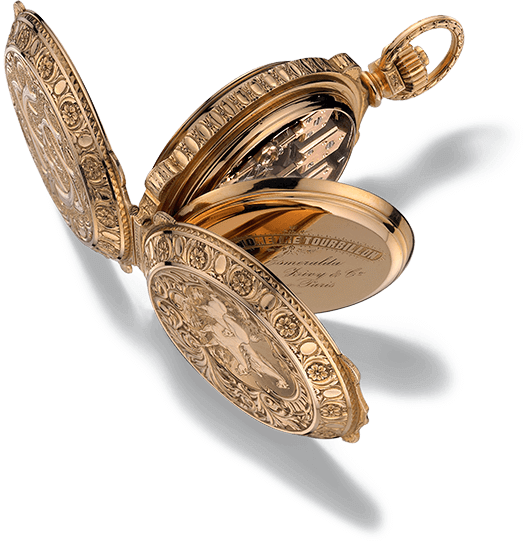Girard-Perregaux Laureato Absolute Ti 230
La Chaux-de-Fonds, 3 August, 2021 – Girard-Perregaux was founded 230 years ago in 1791, the same year an English clergyman, William Gregor, discovered titanium in Cornwall. With the release of the Laureato Absolute Ti 230, the new model unites the Manufacture’s know-how with the lightweight element. The resultant two watches are contemporary, rich in character and repeatedly play with contrasting shades and shapes. Further highlighting this important anniversary, the Ti 230 blue dial reference will be distributed exclusively through Wempe for the first month following its launch.
This year marks the 230th anniversary of Girard-Perregaux. As part of its celebrations, the Manufacture is revisiting its iconic models and releasing a number of new creations. The story of the Maison began in 1791 when Jean-François Bautte, aged just 19, produced his first pocket watch. However, the most romantic chapter in the brand’s history is when Constant Girard married Marie Perregaux in 1854, culminating in the birth of one of the greatest names in watchmaking.

In 1791, clearly a remarkable year, an English clergyman, William Gregor, discovered a black sand called menachanite in Cornwall. He analysed it and concluded that it contained oxides of iron and an unknown metal. This metal was subsequently identified as titanium, an element named after the Titans, the children of Uranus and Gaea in Greek mythology. Today, titanium is widely used, not only in watchmaking but also in the fields of aerospace, medicine and motorsport, selected for its array of benefits.
The Laureato Absolute Ti 230 unites the two stories of Girard-Perregaux and William Gregor, drawing on know- how amassed over 230 years. Titanium comes in many forms, sometimes alloyed with other elements. Girard- Perregaux prefers to use Grade 5 titanium as it is particularly strong, corrosion resistant, lightweight and hypoallergenic; attributes that enrich the wearer’s experience.

Another reason for using Grade 5 titanium is that the metal can be polished. Girard-Perregaux presents the Laureato Absolute Ti 230 in a 44mm lightly sandblasted case that encompasses polished facets, providing a beautiful gleam and subtle contrast. Successfully combining both types of finish proves more demanding, however, as Girard-Perregaux has repeatedly shown, it never shies from a challenge.
Patrick Pruniaux, CEO of Girard-Perregaux, remarks, “With the release of the Laureato Absolute Ti 230 we wanted to create a new version of our iconic watch from 1975. This model is modern but encompasses traditional craftsmanship. The sandwich dial construction and GP’s world-premiere Rubber Alloy strap, this time incorporating titanium, are further sumptuous details that also feature on this watch. Finally, while the price may be more inclusive, the quality remains typically Girard-Perregaux and the watch feels just as exclusive as our other models.”
Kim-Eva Wempe, managing owner of Gerhard D. Wempe KG of Wempe, comments, “Once again, Girard- Perregaux kindly approached us and offered exclusivity for this new model prior to its worldwide launch. We are delighted to have this opportunity and we appreciate the close working relationship we enjoy with Girard- Perregaux, forged over several years but solidified last year when we were fortunate to become their exclusive retailer across Germany.”

The combination of curves and lines are juxtaposed with the octagonal bezel and crown, beautifully playing with contrasts. The Laureato Absolute Ti 230 is available with a choice of a blue or grey dial, augmenting eye-appeal. For the first time, the Maison offers a Laureato Absolute where the crown is encircled with a rubber ring, matching the hue of the rubber strap. This detail may not be obvious at first glance, but it will be familiar to those in the know.
The dial is of a sandwich-type construction, comprised of an upper layer, perforated with numerous openings, sat upon a lower layer. The apertures in the upper layer afford partial sight of the lower layer, presented in grey. By adopting this design approach, the apertures form recessed luminescent baton-type indexes, wonderfully playing with depths, thereby heightening the overall appearance of the dial.
Beating at the heart of the Laureato Absolute Ti 230 is a self-winding Manufacture movement, the Calibre GP03300-1060. It contains 218 components, all produced to Girard-Perregaux’s exacting standards.
Upholding Laureato tradition, the strap is integrated, a characteristic found on the original model released in 1975. The strap, made of GP Rubber Alloy, this time containing titanium, perfectly matches the colour of the dial, and features a fabric effect texture, tastefully enlivened with grey stitching. Girard-Perregaux, consistent with its no-compromise attitude, has selected FKM rubber, a specification that provides greater suppleness and resistance than conventional rubber. The Manufacture has chosen to pair the strap with a titanium folding clasp with a micro-adjustment system, allowing the wearer to fine tune the size to deliver the optimal wrist fit.
The Laureato Absolute Ti 230, as previously stated, is offered in two variants, blue and grey. Each option is limited to 230 pieces
The blue dial version of the Laureato Absolute Ti 230 will be sold exclusively by Wempe for one month in its ten boutiques across Germany as well as its flagship stores in New York and London. Thereafter, the model will be available in all authorised Girard-Perregaux retailers and on the brand’s e-commerce site.
With immediate effect, the grey dial version is available in all authorised Girard-Perregaux retailers as well as the brand’s e-commerce site.
About Girard-Perregaux
Founded in 1791, Girard-Perregaux is one of the oldest fine watchmaking manufactures still in operation and is appreciated by those in the know. This year the company celebrates its 230th anniversary, a fitting testament to the brand’s watchmaking expertise. Indeed, the firm’s history is dotted with exceptional creations that skilfully blend aesthetics and functionality. These models include the iconic Laureato, born in 1975, as well as the legendary Tourbillon ‘With Three Gold Bridges,’ a watch that made the invisible visible, transforming bridges from just a technical element to an integral part of the timepiece – a first in watchmaking. Girard-Perregaux’s place at the vanguard of horological innovation is confirmed by over one hundred recorded patents together with numerous prizes and distinctions. It remains one of the few watchmakers to retain Manufacture status for over two centuries by mastering all the required horological skills in-house and making watches infused with a notable degree of authenticity. While Girard-Perregaux respects its heritage, it continues to look ahead, embracing new technologies, state of the art materials, and fresh takes on iconic shapes.
Girard-Perregaux is part of the Kering Group, a world leader in luxury apparel.
Technical specification
LAUREATO ABSOLUTE TI 230
Reference: 81070-21-001-FB6A (grey dial) Reference: 81070-21-002-FB6A (blue dial) World Price: CHF 8,260
Case
Material: Grade 5 titanium Diameter: 44.00 mm
Height: 14.65 mm
Glass: sapphire anti-reflective
Case-back: secured by 6 screws, engraved Laureato Absolute logo Dial 1: blue, cut out ‘baton’ type indexes with luminescent material Dial 2: grey, cut out ‘baton’ type indexes with luminescent material Hands: ‘baton’ type with luminescent material
Water resistance: 300 metres (30 ATM)
Movement
Reference: GP03300-1060
Self-winding mechanical movement Diameter: 25.95 mm (111/2’’’) Height: 3.36 mm
Frequency: 28,800 Vib/h – (4 Hz) Number of components: 218 Number of jewels: 27
Power reserve: min. 46 hours
Functions: Hours, minutes, central seconds, date
Bracelet
Material: blue rubber injected with titanium, fabric effect and grey stitching Material: grey rubber injected with titanium, fabric effect and grey stitching Buckle: titanium, folding clasp with micro adjustment system


















